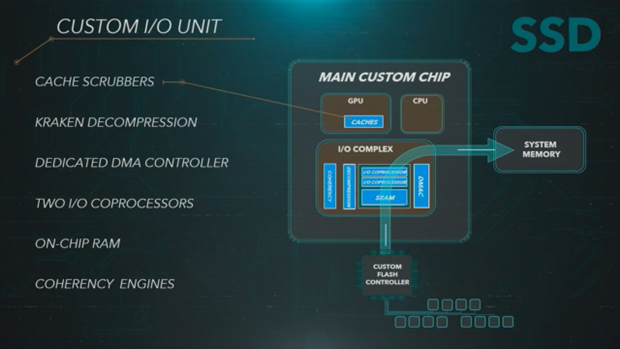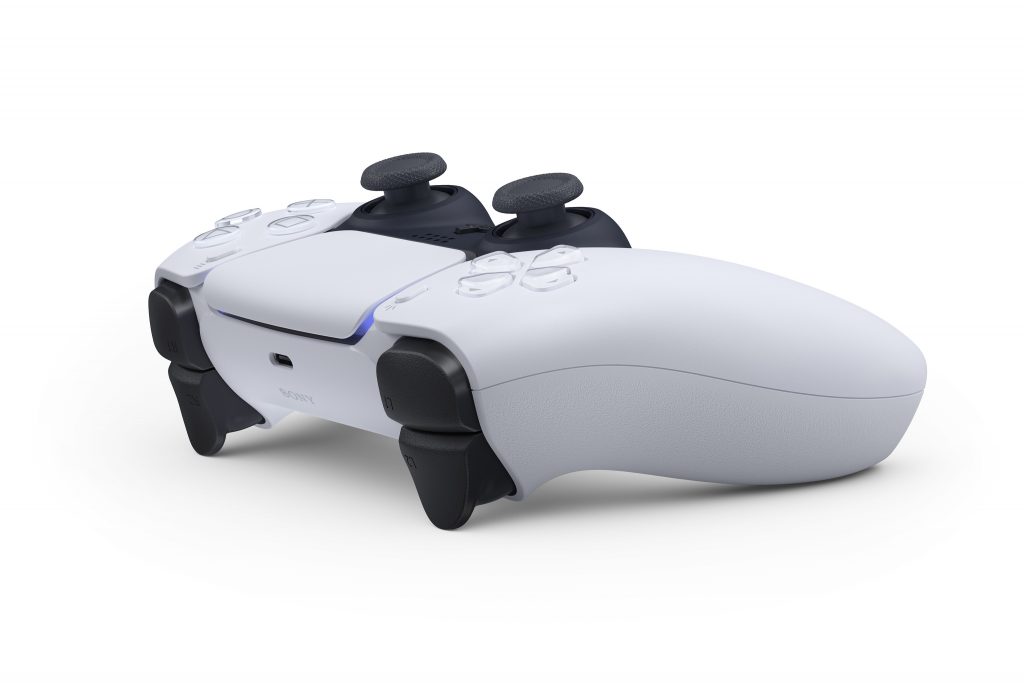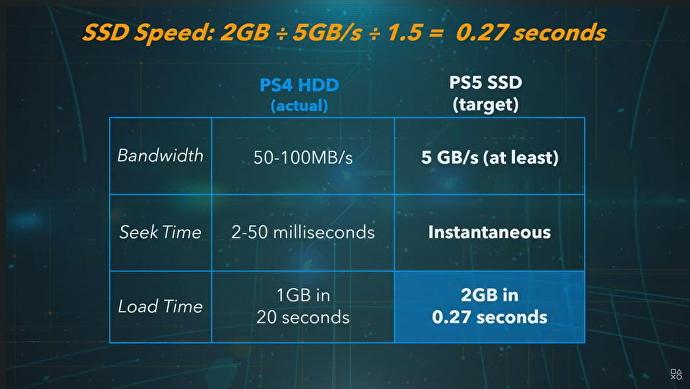
Both Microsoft and Sony have been making a lot of noise about their ninth-generation console storage solutions. Both the PlayStation 5 and the Xbox Series X are set to feature the fastest storage we’ve seen in a console to date. In the case of the PlayStation 5, its 5.5 GB/s SSD is actually faster than just about any NVMe drive out there on the market today, including the new PCIe 4.0 parts out there.
Developers have been talking about ways in which the high speed SSD storage can be leveraged to deliver better experiences. A lot of what we’ve been hearing is about open world games and how fast SSD storage will minimize load times, pop-in, and make it possible to scale LODs on the fly. Epic, in particular, showcased exactly this with their Unreal 5 Nanite tech demo on what looks to be PlayStation 5 hardware.
The PlayStation 5 undeniably enjoys a large advantage in terms of raw SSD throughput. We’re looking at a 5.5 GB/s part compared to the Xbox Series X, which ships with a 2.4 GB/s SSD. Normally, when it comes to console hardware, a 100 percent increase in capabilities tends to mean a noticeable difference in-game. The PlayStation 4, for instance, features a 50 percent faster GPU than the Xbox One. This has allowed developers to run a large chunk of titles on the PlayStation 4 at 1080p or, at worst 900p, while Xbox One owners had to make do with lower resolution throughput. Differences in CPU capabilities between the PlayStation 4 and the PlayStation 4 Pro meant that certain games like Fallout 4 performed noticeably better despite just a 33 percent increase in CPU capabilities.
In this scenario, you’d expect a 100 percent increase in SSD throughput-the difference between the PlayStation 5’s and Xbox Series X’s SSD solutions-to have a measurable impact on performance. And, reading between the lines, looking at how much Sony’s been pushing that 5.5 GB/s SSD as a USP for their console, you might even assume that a faster SSD could compensate for the PlayStation 5’s less-capable Teraflop GPU (compared to Xbox Series X).
The truth is that we’re dealing with a complex situation and, until we see ninth-gen games in action, we won’t know the full extent to which the PlayStation 5’s SSD will make a difference. To date, developers have leveraged workflows and paradigms centered on 5400 RPM hard disk storage that delivers a bit over 100 MB/s of I/O throughput. However, even in the absence of next-gen console games to test, it is possible for us to make some reasonable predictions about how much SSD performance will matter. The short of it? The PlayStation 5’s SSD will likely be leveraged to do some interesting things that developers working on the Series might have trouble pulling off. However, by and large, image quality and performance will still be largely dictated by CPU and GPU performance. And in these areas, Microsoft’s console maintains considerable advantages.
What exactly does storage do?
As the name suggests, storage devices serve to store data that is currently not in use. Computer storage-whether you’re talking about a 5400 RPM hard drive or a 5.5 GB/s SSD, is not directly connected to the CPU. When a program needs something on storage, the data’s copied over to the RAM. Because the RAM stores data that’s currently in use, and because the CPU requests data from RAM memory, RAM speed has a measurable impact on game performance.
The slower the RAM, the less data the CPU can deal with. On a modern PC, dropping down to single-channel DDR3 RAM speed is enough to transform some games into a complete, stutter mess. On consoles with common memory pools, RAM to tends to be much faster since it also moonlights as VRAM. This is far, far, far faster than the fastest SSD storage out there. Moreover, latency-or the time it takes for an operation to take place-is orders of magnitude lower on RAM than it is on storage: microseconds instead of milliseconds.
Performance doesn’t scale with storage throughput
Storage, even super-fast storage, then, acts as a reservoir. Unless it is so slow that additional assets don’t fully load in during a game’s load time, storage won’t have an actual impact on in-game performance. It’s possible to run plenty of modern games on storage devices with a fraction of a fraction of the throughput of the PlayStation 5’s SSD. We have, for instance, tried running an open world RPG with plenty of loading from a USB external hard disk connected to a USB 2.0 port. Running on USB 2.0 connection, the external hard disk delivered somewhere under 60 MB/s of throughput. To put things into perspective, that’s slower than a gigabit internet connection. Still, despite cripplingly slow storage throughput, the game runs reasonably well, albeit with additional loading hiccups here and there. Crucially, the average framerate isn’t substantially different from when we ran the same game on a 2.3 GB/s NVMe SSD with nearly 50 times the I/O throughput.
There are still ways developers could leverage fast storage
An interesting piece of information about the PS5’s SSD storage capabilities isi a tidbit from Insomniac Games. The developers of 2018’s Spiderman on PlayStation 4 mentioned that SSD storage helps to reduce the number of assets that need to reside on RAM. Seek times on typical HDD storage can go as high as 20-30ms, which is greater than one 16.66ms frame in-game. Latency on SSDs is far, far lower. This means that many objects can be loaded from the SSD to RAM on-the-fly, without impacting the user experience. However, again, the difference in capabilities between the PlayStation 5 and the Xbox Series X is largely a moot point here. Both consoles have storage that’s fast enough to enable developers to swap assets in and out of memory within completion time for a single frame. Both are also evidently fast enough to allow for “quick resume” functionality.
Epic mentioned that LODs generated with its Nanite technology would scale based on storage throughput. They didn’t specify exactly how. But the wording of their message-indicating different results on mobile devices, consoles, and elsewhere-hints that scaling will be tiered in nature, with NVMe SSDs of all kinds benefiting from the top-end experience. Because any NVMe SSD can load in data far faster than it takes the system to render a frame, the Xbox Series X isn’t exactly placed at a disadvantage. It’s fast enough that anything more just doesn’t matter.
Conclusion
It would be easy to make simple black-and-white conclusions about SSDs and their impact on ninth-gen gaming. “The PlayStation 5’s SSD is faster” and “The Xbox Series X’s GPU is faster” are two sides of the same coin. In actuality we don’t know whether or even how developers in the coming generation will leverage SSD storage. Will it result in some improvements? Definitely, and loading screens will be at the top of the list there. But will it cause a graphics disparity between the PlayStation 5 and the Xbox Series X? It might but just don’t know right now.
Note: The views expressed in this article are those of the author and do not necessarily represent the views of, and should not be attributed to, GamingBolt as an organization.
















